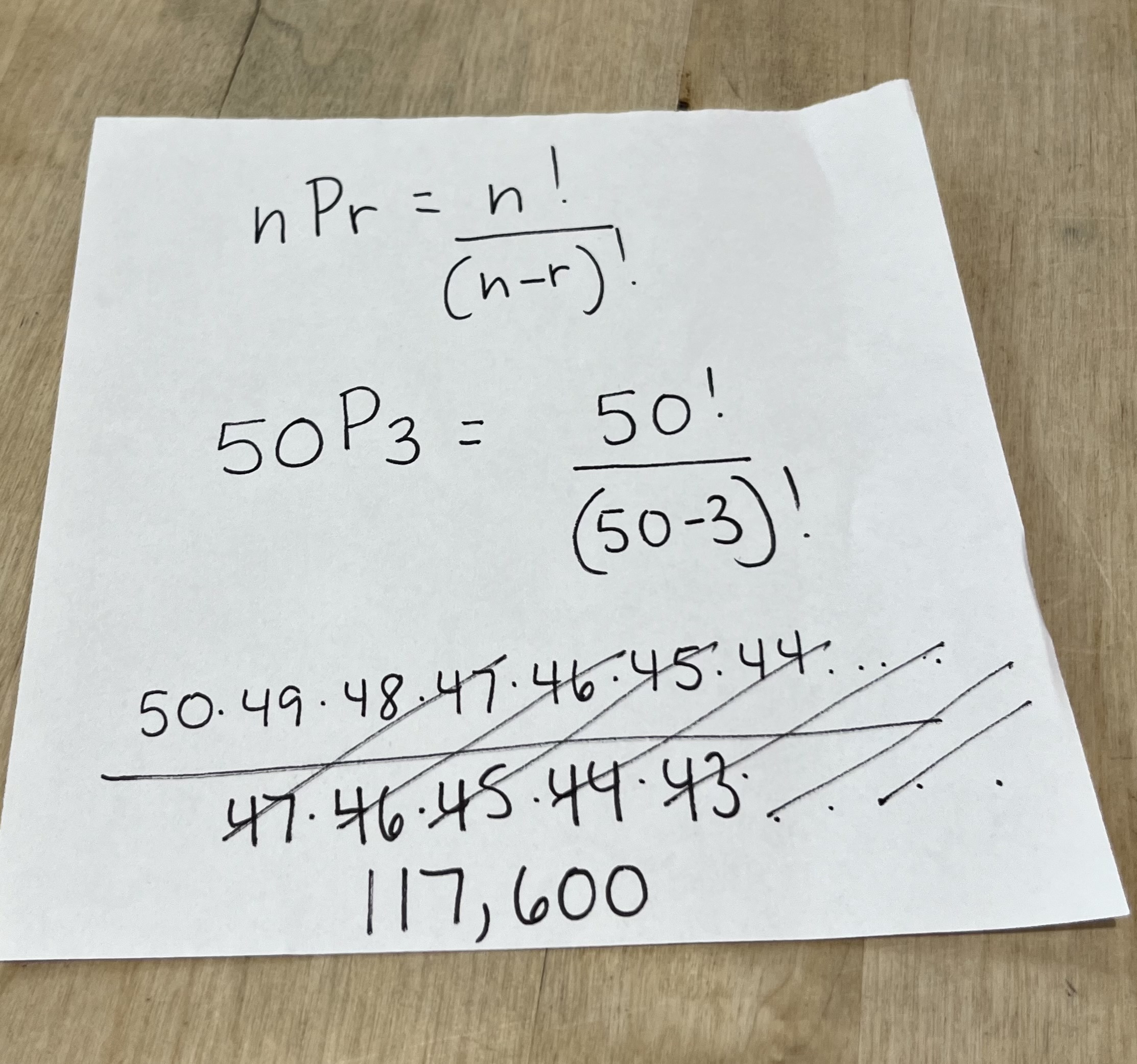Combinatorics is a branch of mathematics which is about counting – and we will discover many exciting examples of “things” you can count. You can use combinatorics to calculate the “total number of possible outcomes”.
Spark your thinking!
1. Set up your math mini spark recording page: #103: Combinatorics
To do this mini spark you need to know a little about factorials. Steps 2 and 3 will review them for you.
2. The factorial function (symbol: !) says to multiply all whole numbers from our chosen number down to 1. Example: 4! = 4 × 3 × 2 × 1 = 24.
Complete these two problems so that they look similar to the example:
Example: 6! = 6 x 5 x 4 × 3 × 2 × 1 = 720
5! =
9! =
Scroll to the bottom of this post to see if you are correct. If you got it correct, add a star. Add the correct answer if needed.
3. Watch this short video that show you how to divide factorials. Don’t worry. It isn’t hard. Do the problems with the teacher on your recording page.
4. Study this teaching page. Write the type of the formulas and the formulas on your recording page.

5. Watch this video. Do the first two math problems with the teacher on your recording page. Try the last problem by yourself on your recording page. The answer is at the end of this post.
Advanced: Check out this teaching page. Each of the sections has a mini lesson, a practice problem, and a solution. Read each lesson and try the problem on your recording page. Check your work. If you complete this, talk with your EY teacher about using this as a badge option.
Factorials
Permutations
Combinations
Combinatorics and Pascal’s Triangle
Combinatorics and Probability
6. Share your math mini spark recording page with your teacher/EY coordinator
5! = 5 x 4 × 3 × 2 × 1 = 120
9! = 9 x 8 x 7 x 6 x 5 x 4 × 3 × 2 × 1 = 362,880
50 people are in a race. How many ways can gold, silver, and bronze be awarded?


 Friendly numbers are a special type of number that have a unique connection with other numbers. To understand this relationship, we will add up all of the factors of a number and then we look at the index of a number and compare it to the index of another number. Check it out in this mini spark.
Friendly numbers are a special type of number that have a unique connection with other numbers. To understand this relationship, we will add up all of the factors of a number and then we look at the index of a number and compare it to the index of another number. Check it out in this mini spark. There is a wealth of information when it comes to volleyball! Whether you’re examining individual player statistics, team standings, or breaking down a specific match… MATH IS EVERYWHERE IN VOLLEYBALL!
There is a wealth of information when it comes to volleyball! Whether you’re examining individual player statistics, team standings, or breaking down a specific match… MATH IS EVERYWHERE IN VOLLEYBALL!








 Möbius strip, a one-sided surface that can be constructed by affixing the ends of a rectangular strip after first having given one of the ends a one-half twist.
Möbius strip, a one-sided surface that can be constructed by affixing the ends of a rectangular strip after first having given one of the ends a one-half twist.
